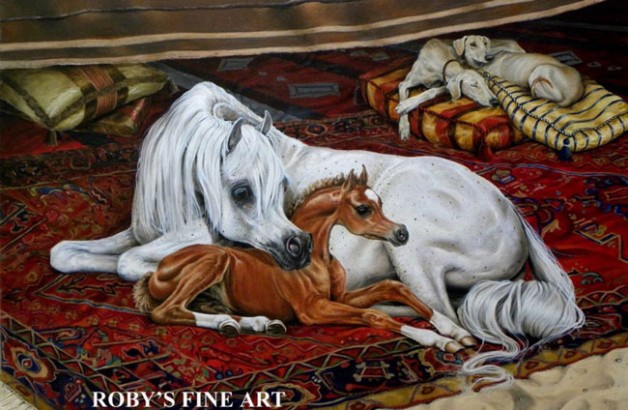By Katrin Hinrichs,
Most of the current research describes the effect of recipient mare size on the resulting foal.
- I have two registered Warmblood mares. I plan to ride both in competition but I also would like to get offspring from them. On the other hand, I have two unregistered mares big enough for receiving the embryos, but they aren’t the same type of horse as the two Warmblood mares. One is a Haflinger-Schwarzwälder cross, and the other a Standardbred cross. A friend of mine suggested that both receiving mares would influence the foals–especially regarding future performance records–in a negative way. Is there any proof or research available about the receiving mare’s effect on the foal?
Jessica Wieland, Germany
- There is data available indicating that the recipient mare does influence a foal’s traits. Most of this describes the effect of recipient mare size in comparison to that of the donor mare. In a study on transfer of pony embryos to either pony or draft mares, a research group in Poland found that at maturity (4 ½ years) the pony-in-draft foals were 1.5 to 2.5 inches higher at the withers than those in pony mares, and they also had proportionately longer front legs, especially the cannons, which were almost 10% longer in proportion to body size.
These findings were supported by a study in England in which foals resulting from pony embryos transferred to Thoroughbreds were compared to foals resulting from Thoroughbred embryos transferred to ponies, and both were compared to their same-size recipient controls. The foals from embryos transferred to the “wrong” size mares were different from their control siblings not only in weight and height at birth but also in their growth patterns. At 3 years, the foals’ body weight, length from head to tail, girth, cannon bone circumference, and forearm and cannon bone lengths differed from those of the control foals. In another study by the same group, foals from identical twin embryos that had been transferred to different-size recipient mares differed three inches in height at the withers at adulthood.
Much less information is available on other traits the recipient mare might influence. In an effort to evaluate this, an Austrian research group used a questionnaire based on an established “horse personality” rating to gather information about behavior of embryo transfer foals (all Warmbloods) and compare this with the behavior of their genetic sire and dam and the recipient mare. The only significant correlation found between an embryo transfer foal and the recipient mare was that of “the social motivation of the recipient mare on the learning capacity of the embryo transfer offspring.” This group also reported at a meeting that the foals’ impulsion under saddle appeared to be influenced by the recipient mare. To the best of my knowledge, this is the only actual research available in this area.




Thank you for this post. This is a significant topic as it is already effecting people’s breeding decisions. Perhaps one solution to foals being properly influenced by recipient mares is what one prominent Standardbred farm is doing. They use same breed recipient mares who were not producing competitive enough foals from a genetic perspective, allowing the ET foals to be raised by mares who do have the inherent social characteristics of the bred, such as competiveness at the trot.